 |
| A friend took advantage of the custom engraving in the gift shop. |
Every year for the last three years, we've gone on a tour of a bourbon distillery in Kentucky every year for the last three years. This year, our trip took up to the Woodford Reserve Distillery.
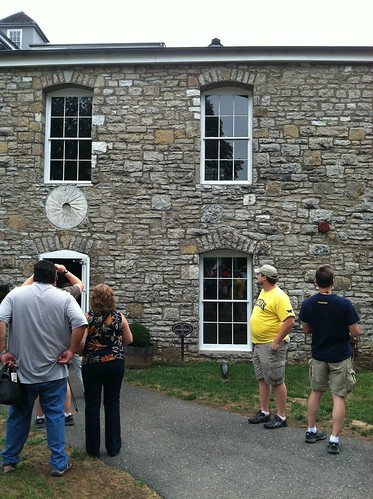 |
| Outside the distillery building |
At Woodford, they use the original limestone buildings erected by Scotch-Irish immigrants who originally owned the farm. Inside this building is the distillery.
 |
| Barrel run with newly filled barrels |
Barrels are transported between buildings on a barrel run, which is a sloped set of iron rails that runs between buildings, allowing them to roll easily along the track. These barrels have just been filled at the distillery and are being stacked up, ready to go into the storage warehouses when enough have been filled.
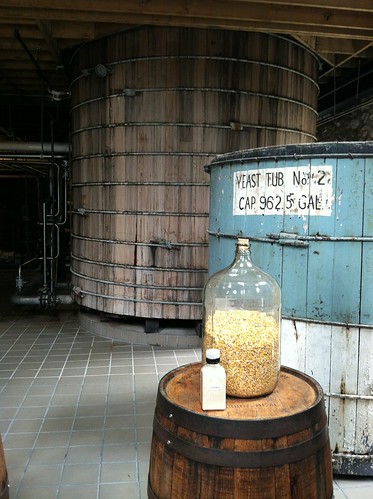 |
| Grain sample on display |
During the tour, they told us about the exact proportions in the grain mix they use, which is high in corn and unusually high in rye, with only a small amount of malted barley. The grain arrives as whole kernels, and they hammer mill it to the course grind shown in the smaller sample. A hammer mill provides a result more similar to stone grinding than a roller mill used in most modern bread production, because it preserves the germ and therefor the majority of the nutrients and a lot of the flavor in the grain.
 |
| Mash-tun interior |
They use cypress tanks (made from Georgia cypress!) with chilled water cooling coils for their mash-tuns. You can see the exterior of this mash-tun in the background of the photo above this one. Cypress is used because of its resistance to water and its dimensional stability when wet. They should get decades of use out of these tanks.
 |
| Bubbling mash/wort/distiller's beer |
Woodford uses a sour mash, which means that, like a sourdough, they reserve some of the previous mash to help start the next batch. This helps consistency between batches, and I imagine that it is similar to sourdough, where good bacteria produce stronger flavors if you let them munch away for longer. If I remember correctly, they also pitch yeast into the mash in addition to the starter.
 |
| Mash cooker |
In the mash cooker, the grains are combined with hot water .
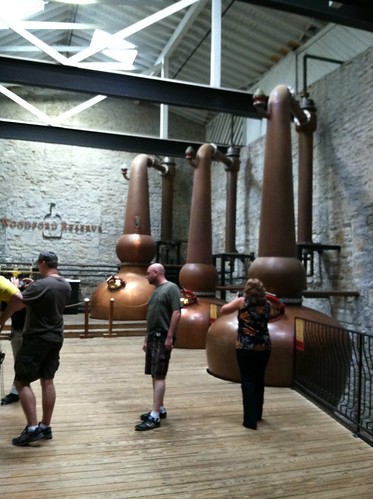 |
| Copper Pot Stills |
The bourbon is tripple distilled in three copper pot stills. The three stages are called beer, low wine, and high wine. Most bourbon distilleries use column stills because they are easier to use for high-quantity production, but pot stills are known for the high quality of the liquor they produce.
 |
| Original copper pot still from the property |
Even so, today's huge pot stills are a lot more efficient for production than this tiny old one used by the farm settlers.
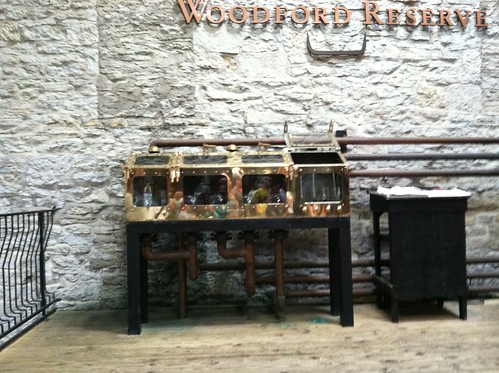 |
| Spirit safe used to test the alcohol content of the distillate. |
The master distiller will open this spirit safe to check the proof of the product at the different stages of production. You can see the distillate pouring from the pipes as you stand next to the safe. During prohibition, the distiller would have had a key and the government officer would have had the other, and they would have both needed to be there in order to open this safe.
 |
| Modern copper pot still in use as the beer still |
This still provides the first level of distillation.
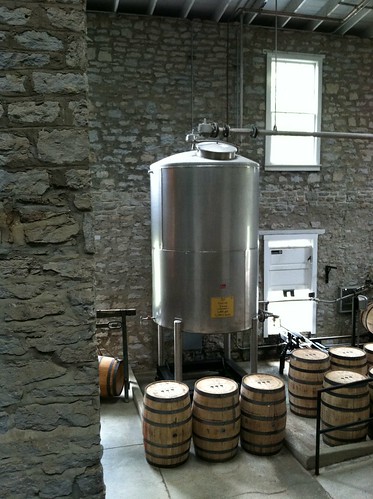 |
| Tank used to dilute the spirit to the proper strength for barreling. |
The proof of the spirit going into the barrel is regulated by law, and this tank is used to adjust the spirit coming out to the final distillation to the proper strength.
 |
| Barrels with various levels of use and char |
Here you can see how the oak barrels are transformed for and by the bourbon aging process. From left to right, we have new oak, toasted oak, charred oak, used barrel. Bourbon barrels must, by law, be made from white oak, and never have been used before.
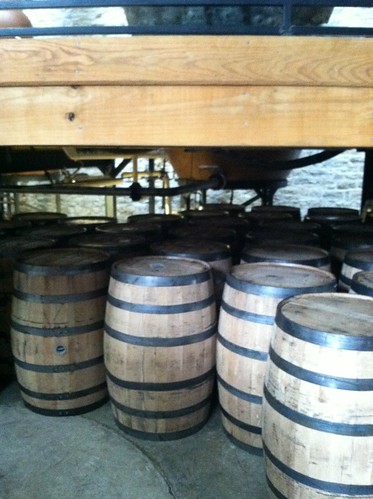 |
| Extra barrels ready to be filled. |
 |
| Barrels are filled individually |
The horizontal cask is set up for filling, resting on a scale attached to the barrel run. The distiller mans the spout as spirit pours into the barrel, until it reaches the proper weight. Then he plugs the hole with a bung made of poplar, because this soft wood will not contract as fast as oak, ensuring a good seal. Then he rolls it down the barrel run toward the warehouse for aging.
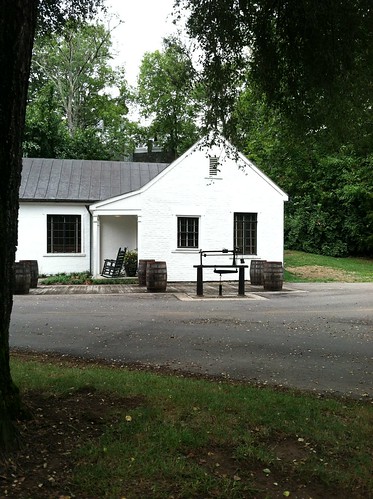 |
| Old scale and office. |
Old scales like this one were originally used to gauge the value of a barrel of whiskey. Older barrels actually weigh less, because water is lost during the aging process.
 |
| Aging warehouse |
Like the distillery, the aging warehouse is made of limestone in the Scotch-Irish vernacular style.
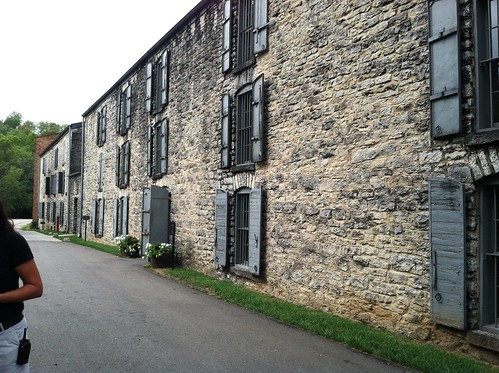 |
| Aging warehouse |
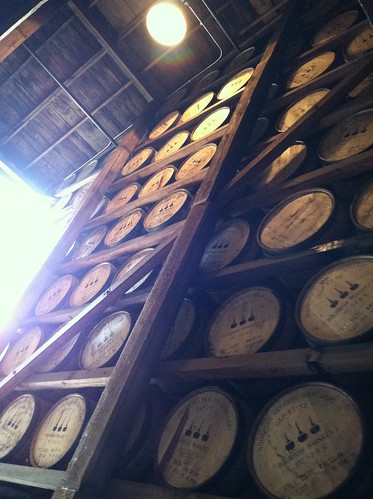 |
| Stored barrels aging |
 |
| Barrels of aged whiskey being emptied |
As the whiskey is poured out into this trough, small lumps of charcoal from the interior of the bottle loosened during the aging process also pours into the trough and is caught by a sieve. Whiskey is then diluted to the proper proof before heading to the bottling line across the room.
 |
| Bottling line |
On this small bottling line, some things are still done by hand.





















No comments:
Post a Comment